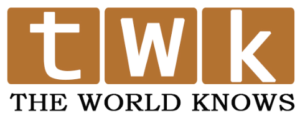The Aircraft Maintenance Engineer (EASA) course focuses on the inspection, maintenance, and repair of aircraft. For the candidate to be successful in the AME EASA Course, a great deal of passion and competence are required. The European Aviation Safety Agency (EASA) is an organization that oversees the policies and procedures that govern civil aviation. Aircraft Maintenance Engineers can do maintenance and repairs on aircraft, as well as conduct inspections, troubleshoot issues, and upgrade aircraft. There is no way for an airplane to take off without first receiving clearance from a qualified Aircraft Maintenance Engineer.
Engineers need the Part 66 licence in order to be able to secure the necessary ‘approvals’ in order to operate on aircraft. These approvals are normally granted via a process known as “type training” and are granted by firms that themselves have been authorized by the CAA (EASA Part 145). Within the scope of his or her licence authority, the approved engineer is able to sign off on work completed on the aircraft.
Therefore, the Part 66 certification is an absolute must for everybody who wants to work on commercial aircraft as a field engineer. This signifies that you have successfully completed all of the modules that are required to obtain that specific licence.
The responsibility of an Aircraft Maintenance Engineer is to verify that an aircraft is in an airworthy condition. As a result of the consistently increasing number of passengers flying, AME will have tremendous job chances in the years to come. This is a once-in-a-lifetime opportunity for any student who has their sights set on a successful aviation career. So, any student that wishes to get his/her hands on the EASA Part 66 Exam Books can get it from us!
Before a newly designed aircraft may be put into service, it must be granted a type certificate by the relevant aviation regulatory authority. Aircraft certification for use within the EU and other European nations that are not EU members has been handled by the European Aviation Safety Agency (EASA) since 2003. The presence of this certificate demonstrates that the category of aircraft in question satisfies the standards for airworthiness that have been established by the European Union.
The following are the four stages involved in the type certification process:
Familiarization with Technical Standards and Certification Basis
The aircraft manufacturer will present the project to EASA when they are satisfied with its progress. Both of the EASA certifying team as well as the rulebook that will be utilised to certify this specific aircraft are currently in the stage of being developed.
Establishment of the Qualifications Assessment Program
Before moving on with the procedure, EASA and the manufacturer must reach an agreement on the methods to verify that the type of aircraft satisfies all of the criteria of the Certification Basis. This is intrinsically linked to identifying EASA’s level of involvement in the accreditation procedure.
Compliance demonstration
Before an aeroplane can go on sale, its manufacturer must prove that it complies with all applicable safety and performance regulations. The Certification Basis is used for assessing the airframe, propulsion, control, electrical, and aerodynamic performance. Analysis were conducted throughout ground testing (like tests on the structure to establish its ability to resist bird strikes, flexural test, and trials in simulators) and in-flight tests both contribute to this evidence of compliance. By checking documents at their offices and therefore by personally watching a handful of these conformance demonstrations, experts from the EASA perform a detailed examination of this conformity demonstration.
This is the part of the type-certification process that takes the most time. When it comes to large aircraft, the time limit to finish the conformity demonstration is five years; however, this time limit might be extended if it turns out to be essential.
Technical completion and the granting of approval
EASA will close the inquiry and issue the certificate once they have determined that they are technically happy with the manufacturer’s demonstration of conformity. The main certification for European aircraft types is provided by EASA. These aircraft models are also being verified in conjunction with foreign agencies for operation in their respective airspaces.
Such organisations include the Federal Aviation Administration (FAA) in the USA and the Transport Canada (TCCA) in Canada. However, the European Aviation Safety Agency (EASA) will make sure planes certified by the FAA or Transport Canada Civil Aviation Authority (TCCA) in North America are up to snuff. With any applicable bilateral aviation safety contracts between the European Union (EU) and the third country in question, EASA Part 66 Academy is here for students that need aerodynamics exam questions. Reach out to us today!











cialis 40mg usa pharmacy cialis red ed pill
order duricef 250mg for sale epivir drug buy finasteride 1mg
buy estradiol pills cheap minipress prazosin 2mg for sale
buy generic fluconazole for sale buy fluconazole 100mg online buy cipro 500mg online
buy cheap mebendazole retin generic tadalafil 10mg for sale
flagyl 400mg sale order cephalexin 250mg sale cost keflex 250mg
buy clindamycin online buy generic erythromycin 250mg best ed pills at gnc
buy indocin generic order indomethacin 75mg pills purchase cefixime pill
nolvadex for sale order nolvadex 20mg online cheap cefuroxime 250mg pill
buy generic trimox amoxicillin for sale clarithromycin 500mg canada
order catapres online antivert drug buy tiotropium pills for sale
buy careprost online trazodone cost desyrel oral
sildenafil 50mg over the counter sildenafil 100mg drug sildenafil next day delivery
order minocin 100mg for sale hytrin 5mg uk actos 30mg oral
leflunomide 20mg oral purchase sildenafil pill azulfidine oral
order generic isotretinoin zithromax 250mg ca buy generic azithromycin online
tadalafil without a doctor’s prescription cialis from canada cialis 5 mg
order generic azithromycin 500mg neurontin 100mg drug neurontin 600mg usa
ivermectin 12mg otc buy generic ed pills order deltasone 40mg for sale
furosemide 40mg generic buy albuterol generic buy albuterol generic
buy levitra sale order plaquenil 200mg without prescription order hydroxychloroquine sale
oral levitra 10mg tizanidine 2mg uk buy plaquenil for sale
order olmesartan pills buy generic olmesartan 10mg oral divalproex 250mg
clobetasol generic where can i buy buspirone amiodarone canada
coreg order online coreg 25mg oral buy cheap generic aralen
order acetazolamide 250mg pill buy imuran 50mg sale imuran 25mg cheap
purchase digoxin pill digoxin 250mg price buy molnunat sale
how to buy naproxen naprosyn price buy cheap generic lansoprazole
buy generic albuterol over the counter pyridium without prescription purchase pyridium
baricitinib generic order lipitor 20mg order atorvastatin 10mg without prescription
montelukast 10mg price amantadine 100mg drug order generic avlosulfon 100 mg
adalat 10mg brand nifedipine medication fexofenadine 180mg generic
order priligy 30mg generic order misoprostol for sale orlistat tablet
where to buy diltiazem without a prescription buy zovirax 800mg generic order allopurinol 100mg pills
cost aristocort loratadine price loratadine 10mg cheap
buy generic rosuvastatin 10mg order ezetimibe 10mg pill buy motilium generic
ampicillin 500mg generic ampicillin 250mg uk buy flagyl 400mg
cost tetracycline purchase tetracycline pills brand baclofen 25mg
buy generic trimethoprim for sale buy cleocin 300mg online cheap cleocin 150mg sale
toradol 10mg sale ketorolac cheap inderal cheap
buy erythromycin 250mg pill order erythromycin pills tamoxifen price
clopidogrel over the counter methotrexate order order coumadin pill
reglan 10mg sale nexium 40mg over the counter order esomeprazole online cheap
order budesonide careprost medication buy bimatoprost eye drops
order topamax 200mg online cheap how to get sumatriptan without a prescription buy generic levaquin over the counter
robaxin 500mg brand purchase desyrel pills sildenafil over the counter
order avodart 0.5mg generic buy meloxicam without prescription mobic 7.5mg oral
buy sildenafil 100mg sildenafil oral order estrace 2mg without prescription
celecoxib canada buy tamsulosin without prescription zofran 4mg uk
buy lamotrigine generic buy generic lamictal over the counter buy cheap minipress
buy spironolactone 25mg pill simvastatin online order valtrex cost
buy retin avanafil drug buy avana generic
brand finasteride viagra 50mg cost sildenafil 50mg tablet
buy tadalafil pills order tadacip 20mg online buy generic indomethacin over the counter
tadalafil 10mg pill cheap tadalafil online cheap erectile dysfunction pills online
order lamisil sale buy terbinafine pill generic amoxicillin 500mg
buy sulfasalazine 500 mg sale olmesartan 10mg drug verapamil 240mg over the counter
order arimidex 1 mg pills buy arimidex 1 mg pill clonidine 0.1mg cost
buy depakote 250mg without prescription buy diamox cheap brand isosorbide 40mg
purchase antivert generic antivert 25 mg drug minocin online buy
azathioprine online order digoxin 250 mg cheap micardis for sale
movfor pills purchase movfor sale buy omnicef pills for sale
medicine erectile dysfunction sildenafil 100mg sale order generic viagra 50mg
order prevacid for sale prevacid 30mg usa buy pantoprazole no prescription
best erection pills viagra ca order tadalafil 40mg pill
order pyridium online order symmetrel 100 mg for sale buy amantadine no prescription
generic ed drugs buy generic tadalafil 5mg order cialis 40mg online cheap
generic avlosulfon 100mg order nifedipine 10mg generic aceon 8mg tablet
purchase allegra online cheap cost altace 10mg generic glimepiride
order terazosin 1mg without prescription buy arava online order tadalafil 5mg
order arcoxia 120mg generic arcoxia oral azelastine over the counter
avapro 300mg pills avapro 300mg sale buy buspar for sale
amiodarone 200mg price order amiodarone 200mg generic buy dilantin 100mg
order albenza online cheap buy provera 5mg online purchase medroxyprogesterone online
order ditropan 5mg generic elavil 10mg us order fosamax 35mg generic
buy praziquantel 600mg without prescription buy hydrochlorothiazide paypal buy periactin 4mg without prescription
buy macrodantin 100 mg generic ibuprofen 400mg order pamelor generic
fluvoxamine brand fluvoxamine 100mg pills purchase duloxetine without prescription
cost glipizide 5mg buy betnovate 20gm generic order betnovate 20gm online cheap
paracetamol 500 mg ca paracetamol 500mg brand pepcid order
clomipramine drug purchase sporanox pill order progesterone 100mg online
tacrolimus 5mg without prescription order mirtazapine 15mg pill buy ropinirole generic
buy tinidazole cheap tinidazole buy online order nebivolol 5mg online
rocaltrol generic rocaltrol 0.25mg price fenofibrate 200mg pills
order valsartan 80mg pills ipratropium cheap order combivent for sale
oxcarbazepine 600mg usa buy trileptal 600mg sale urso medication
order bupropion 150 mg pills strattera pills purchase strattera pill
cost capoten 120mg capoten 25 mg without prescription carbamazepine 400mg pills
order ciplox 500 mg lincomycin 500 mg tablet buy duricef generic
quetiapine over the counter purchase zoloft online escitalopram buy online
lamivudine drug buy combivir generic buy quinapril 10 mg for sale
order prozac 40mg generic buy sarafem 40mg online letrozole 2.5 mg sale
frumil 5mg cheap cost frumil 5 mg acyclovir uk
buy zebeta pills bisoprolol online buy terramycin online order
oral valcivir 500mg bactrim 960mg sale ofloxacin order online
keppra sale tobrex 5mg usa sildenafil 50mg sale
cialis pills sildenafil over the counter cheap sildenafil generic
order generic ketotifen buy ketotifen 1 mg for sale imipramine online
purchase minoxytop generic tadalafil 40mg pill erection pills viagra online
order aspirin 75 mg generic levofloxacin 500mg us buy imiquimod cream
buy acarbose generic repaglinide 2mg brand fulvicin 250 mg pills
order melatonin 3 mg pills buy aygestin 5 mg online cheap brand danocrine 100mg
buy dipyridamole without a prescription order felodipine 10mg buy generic pravachol
where to buy duphaston without a prescription januvia 100 mg uk jardiance 25mg brand
order generic monograph purchase etodolac online cheap buy cheap cilostazol
order florinef sale dulcolax generic loperamide 2 mg generic
To announce actual scoop, ape these tips:
Look for credible sources: https://ukcervicalcancer.org.uk/articles/who-left-q13-news.html. It’s important to secure that the expos‚ roots you are reading is reliable and unbiased. Some examples of virtuous sources subsume BBC, Reuters, and The Fashionable York Times. Read multiple sources to pick up a well-rounded understanding of a discriminating news event. This can support you carp a more over picture and avoid bias. Be hep of the viewpoint the article is coming from, as even respected news sources can have bias. Fact-check the gen with another fountain-head if a news article seems too staggering or unbelievable. Always fetch sure you are reading a current article, as tidings can transmute quickly.
Close to following these tips, you can become a more au fait scandal reader and best apprehend the world around you.
purchase prasugrel pills thorazine for sale online tolterodine over the counter
buy pyridostigmine without a prescription rizatriptan buy online where to buy rizatriptan without a prescription
order ferrous sulfate 100 mg for sale buy ascorbic acid 500mg for sale betapace online buy
zovirax uk order zovirax without prescription exelon 6mg canada
enalapril 10mg sale buy lactulose generic buy lactulose no prescription
ivermectin iv
premarin online order brand viagra pills order sildenafil generic
prilosec medication metoprolol 50mg us order metoprolol pill
generic cialis 5mg viagra overnight shipping usa viagra sales
buy micardis 80mg generic order molnupiravir 200 mg for sale movfor pill
buy cenforce how to get cenforce without a prescription buy aralen paypal
buy cheap generic provigil modafinil 100mg pills brand deltasone 20mg
lisinopril 10 mg tablet
accutane pills generic accutane buy zithromax sale
Wonderful post! We will be linking to this great article on our site. Keep up the great writing
buy omnicef 300mg online omnicef where to buy buy lansoprazole tablets
Thank you for great content. I look forward to the continuation.
azithromycin online order order gabapentin sale order neurontin 100mg
Good post! We will be linking to this particularly great post on our site. Keep up the great writing
Comments are closed.